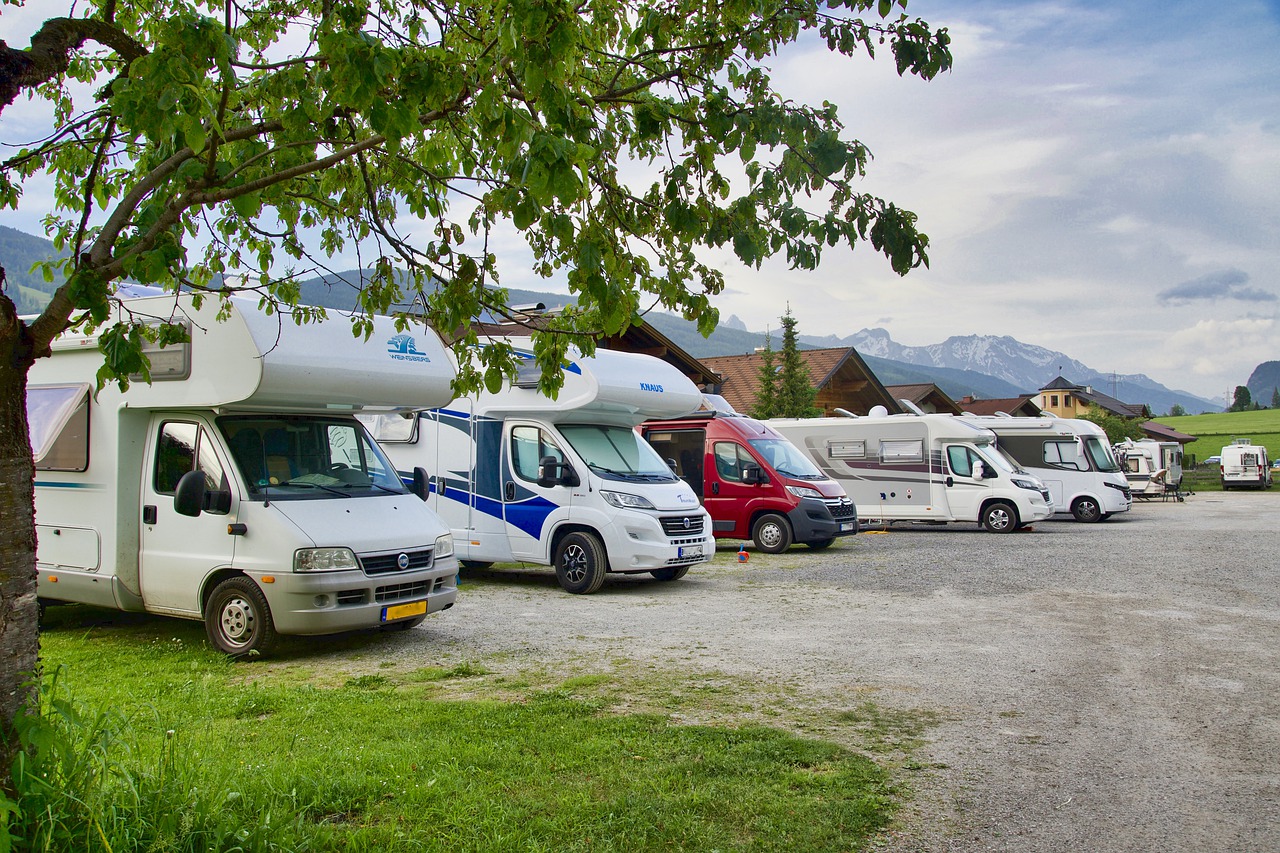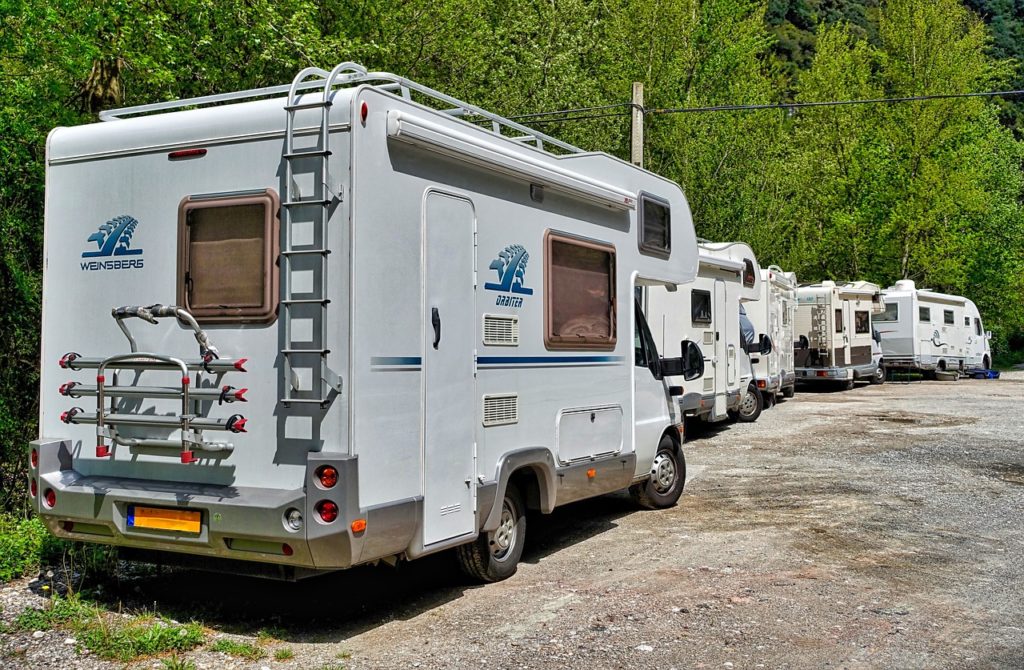Contents
– Integral motorhomes: standard bases for the models
– Specificities of the integral motorhome
There are 5 types of the motorhome. The most petite and economic models are the detachable cell and the van (the “gateway” to the motorhome world).
The integral is the most “majestic” of the motor homes! It is versatile and suitable for families and couples alike. Nevertheless, it is often the last model to be bought, after having tried the others, and generally by retired people. Moreover, the prestigious brands sometimes only have this model to offer. We take a look at the integral motorhome.
Integral motorhomes: common model basics
Carrier vehicle
The chassis is the support on which the motorhome cell is mounted. The base vehicle is also called the “carrier”. It is the platform for the cell. The van is delivered with a bare chassis. It is fitted with a complete enclosure, with the necessary modifications depending on the vehicle’s make.
Note: Even the passenger compartment and the bonnet are removed in the integral RV.
Of the 4 main carrier vehicles, the Fiat Ducato is the king: it has a market share of over 80%.
The manufacturer has anticipated the growth of this activity by adopting a “special camper chassis” to its vans, thus making the task of fitting them out easier.
The main models are:
– Fiat Ducato: average cost, numerous adaptations since its creation, specially designed for motorhomes, good comfort, average engine flexibility, good after-sales service and reliability, average maintenance cost. It can be found on most models.
– Ford Transit: the least expensive, recent return to the field (around 2005), average comfort, average engine flexibility, perfectible after-sales service, average maintenance cost. Generally offered for entry-level profiles and MPVs, very rarely for Elegance models.
– Renault Master: relatively high cost, comfortable, flexible engine, good after-sales service, reliable, correct maintenance cost. Quite rare, it is used for mid-range and top-of-the-range models; few brands use it for their A-Class models.
– Mercedes Sprinter: the most expensive, reliable, comfortable, excellent engine, good after-sales service, very long life (+ 400,000 km), high maintenance costs. It is found on top-of-the-range models, most often on A-Class models and prestige brands.
Living areas and equipment of the integral motorhome

The living areas are practically interchangeable from one motorhome to another. The spaces are open, except for the bedrooms (equipped with curtains or removable partitions) and the bathroom/WC area (these are often integrated into the bathroom):
– The cabin: the cockpit is linked to the airframe (to the living area) via the swivelling and reclining road seats. They provide 2 additional seats if you are receiving guests.
– The kitchen: 3 configurations: straight, L-shaped or inverted L-shaped kitchen (opposite direction to the direction of travel). It consists of:
◦ a 2 or 3 burner hob (gas), a sink + worktop, a tri-energy fridge (gas, 12V or 220V), a freezer;
◦ storage units: cutlery drawers, sliding drawers, turntable drawers, cupboards… ;
◦ options: extractor hood, indoor 230V socket(s), microwave, oven, etc.
The shower room and toilet can be 2 separate rooms (for longer motorhomes). Toilet: chemical toilet with removable cassette or flush (in 12V). The bathroom has:
◦ a shower: preferably separated from the toilet by a door or curtain, washbasin, shower tray, taps, mirror(s)… ;
◦ accessories (or options): duckboard, console (for utensils, soap, shampoo…), cupboards, towel rack, clothesline.
The living room can be straight or L-shaped: generally with two benches, circular or rectangular table, swivelling and can be lowered if it can support part of the extra bed (relatively rare on an integral). It contains a television: a dedicated cupboard, articulated mobile arm, 12 V socket(s).
– Storage: cupboards and wardrobe(s) throughout the living area and external lockers: for storing ancillary items (electric cables, tools, etc.), for various accessories (gas bottles, boiler, cell batteries, etc.).
– The bedroom: the permanent bed is almost always at the back of the vehicle. It contains a large trunk (accessible from the inside and/or outside). It can be positioned laterally, transversely, or in the centre of the room. Some models also offer twin beds:
◦ The permanent bed is between 1.85 and 2 m long and 1.3 to 1.4 m wide.
◦ The 10 to 13 cm thick mattress is quite comfortable on most models.
◦ The bed base is slatted, sometimes consisting of a wooden plate.
Particularities of the integral motorhome
The 3 essential differences between an integral and a nightcap or a profile are its external height, the positioning of the second bed (or the extra bed) and its profile :
– The profile of the cell: the passenger compartment of the carrier is entirely boneless, as the cell encompasses the vehicle right down to its dashboard and engine. Therefore, an integral does not inherit the “nose” of its carrier vehicle.
– Dimensions: The height of an integral is generally between that of a profile and that of a cabriolet:
◦ It varies between 2.8 and 2.95 m high.
◦ The width and length vary according to the models for the 3 types (on average, the width of a motorhome varies from 2.15 to 2.35 m, and its length from 6 to over 9 m).
◦ Think about the equipment that can raise the vehicle (satellite dish, antenna, solar panels…)
– The extra bed:
◦ The roof bed: on an integral, the extra bed is called the “roof bed”, located above the cabin. It is retractable using articulated arms often assisted by hydraulic jacks. For higher-end vehicles, it is motorised.
◦ Advantage: this “ready-made bed” is perfect for couples, as it remains hidden most of the time while allowing 2 people (grandchildren, for example) to be invited occasionally. In addition, its discretion gives the vehicle shell better aerodynamics than the cabriolet.
A-Class/Elegance models are generally the most expensive because of their slightly more luxurious layout and the more extensive transformation of their body (specific cabin):
Ass for the low-cost models, prices vary, depending on the type of carrier, the type of engine, the manufacturer, and product quality.
To find out more, you can visit the website of Roma RV in Melbourne. They have a range of vehicles to suit your taste. I hope you enjoy this blog. Don’t forget to share your comments below.


